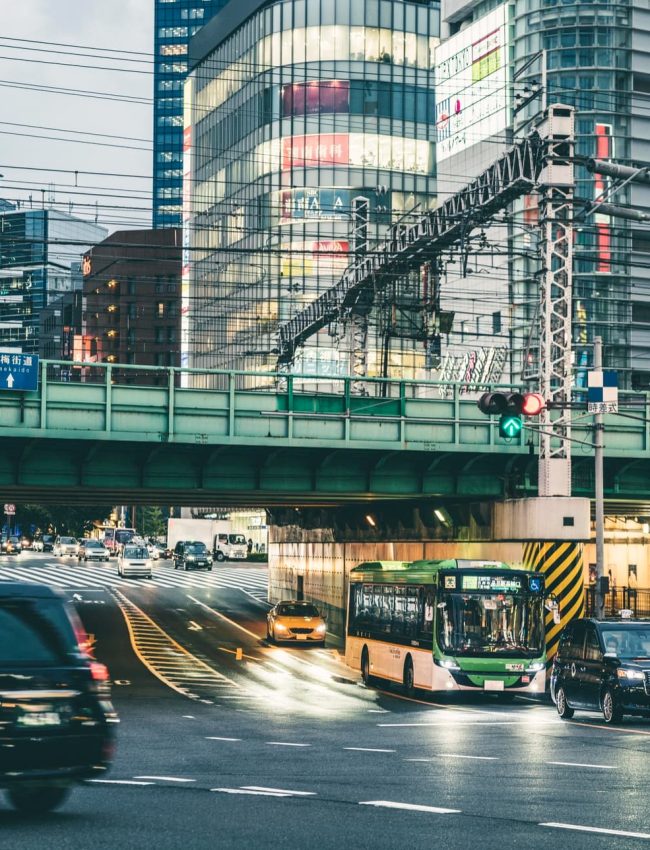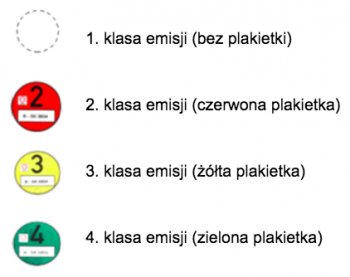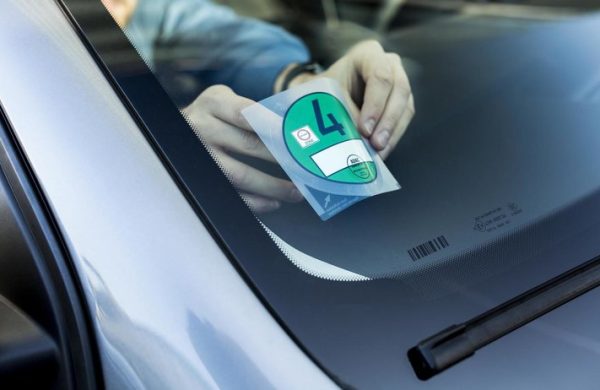
Since 2008, German cities have been legally allowed to designate low-emission zones (umweltzone), which you will not enter without an environmental sticker, also known as Umwelplakette.

The environmental sticker, in German referred to as Umwelplakette, is a key sticker without which you won’t gain access to most major cities in Germany.
Ecological zones that require an ecological sticker are clearly marked with the road sign “UMWELT ZONE”. Without the appropriate badge, entry into these zones is prohibited. That’s why it’s a good idea to get the right Umwelplakette before traveling to Germany and enjoy free movement in German cities.
The beginning and end of ecological zones are marked by road signs, as shown in the following photo:

In these zones, it is important to place a badge on the windshield to avoid fines for not having one. It is recommended to purchase an environmental badge in advance.
The fine for not having a badge is about 80 euros, plus an administrative fee of about 25 euros.
They come in 3 colors green, red and yellow.
The red sticker is for the most polluting cars, the green sticker is for the least polluting cars. The green sticker is valid indefinitely. The yellow and red environmental badge is valid for as long as the regulations of the environmental zones in each city allow.
If the environmental sticker is damaged or the glass is broken, for example, a new environmental sticker should be purchased.
The placard applies to road vehicles, such as cars, trucks, buses, coaches, but does not apply to light vehicles, such as motorcycles or quads.
An important aspect is that the Environmental Badge Germany Umweltplakette is valid indefinitely, unless you change your registration number, in which case, a new badge must be purchased.
It is noteworthy that the Environmental Badge Germany Umweltplakette is not required on German highways.
The badge bears the registration number and stamp of the issuing unit.
The following vehicles are authorized to use the green sticker:
- Automobiles equipped with a gasoline, LPG or hybrid engine, meeting the EURO 1 emission standard (January 1, 1993 and newer).
- Passenger vehicles (M1) and light trucks (N1) with a diesel engine (i.e., a diesel engine) meeting the EURO 4 emission standard (January 1, 2006 and newer).
- Diesel trucks (N2 and N3) and buses (M2 and M3) meeting the EURO 4 emission standard (October 1, 2006 and newer).
- Vehicles equipped with a diesel engine that meets the EURO 3 emission standard and has a particulate filter.
Aachen
Augsburg
Balingen
Berlin
Bochum
Bonn
Bremen
Darmstadt
Darmstadt Heinrichstr
Darmstadt Hügelstr.
Dinslaken
Dusseldorf
Dusseldorf Eco-friendly lanes
Erfurt
Essen
Eschweiler
Frankfurt am Main
Freiburg im Breisgau
Hagen
Halle an der Saale
Hamburg (blue)
Hanover
Heidelberg
Heidenheim
Heilbronn
Herrenberg
Ilsfeld
Karlsruhe
Colony
Krefeld
Langenfeld
Leipzig
Leonberg / Hemmingen and surroundings
Limburg
Ludwigsburg and surroundings
Magdeburg
Mainz (Mainz)
Mannheim
Marburg
Mönchengladbach
Mühlacker
Munich
Münster
Neu-Ulm
Neuss
Offenbach
Osnabrück
Overath
Pfinztal
Pforzheim
Remscheid
Reutlingen
Schwäbisch Gmünd
Siegen
Stuttgart
Stuttgart (blue)
Tübingen
Ulm
Urbach
Wendlingen
Wiesbaden
Wuppertal
In order to get an environmental badge, we need your registration certificate, as the emission class is determined based on this.
As for the blue badge for diesel ban zones, the exact date of its introduction is not yet known at this point, although there is talk of 2023 – 2024.
Next to it, we show how best to place the Germany Umweltplakette environmental badge on the car window.






